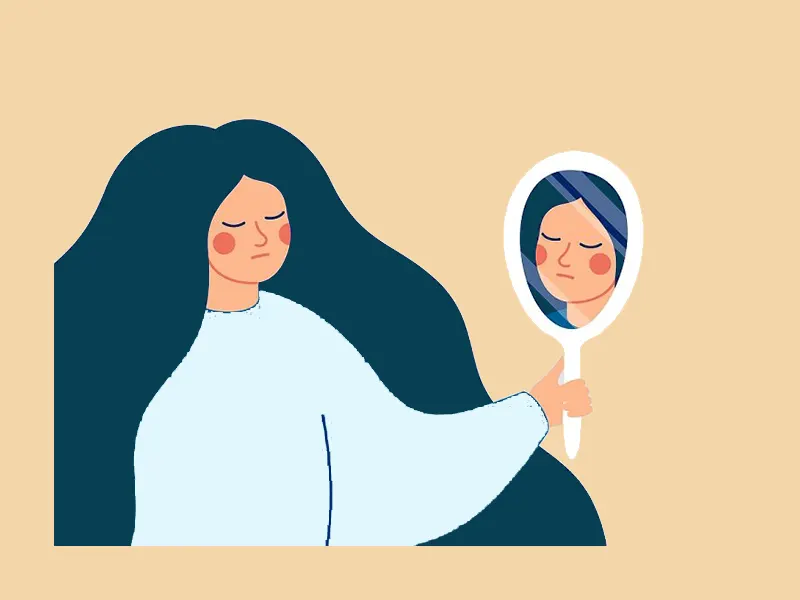Obsessive-compulsive disorder is a psychological disorder that can affect people of any age. This disorder occurs when a person gets caught up in a cycle of obsessive thoughts and actions.
Obsessions (or obsessive thoughts); some thoughts are unwanted and annoying, that make a person very anxious, and obsessive actions are behaviors that a person does to get rid of obsessive thoughts or reduce anxiety. Most people experience some obsessive thoughts or actions in some part of their lives. A person with obsessive-compulsive disorder takes a lot of time from him/her and makes it difficult for him/her to do his daily chores.
The scientific definition of OCD
Obsessions are thoughts that are constantly repeated in a person’s mind and seem to be out of the person’s control and come to his mind against his will. It is as if the person constantly thinks that his hand is not dirty (obsessive thought) and you constantly wash it to reduce the worry that his hand is dirty (coercion or practical obsession)
The word obsessive-compulsive disorder is often used in everyday conversation, but it mostly means “paying attention” to something. For example, someone who says that I am obsessed with my work means that my work is important to me and it does not mean that I have OCD.
You can be very busy with your favorite music but still get back to your daily routine and have dinner with your friends, get ready for bed at a set time and go to work on time in the morning; So, you do not have OCD.
Even having annoying thoughts does not mean obsessive thoughts, for example, everyone may sometimes worry about getting sick themselves or their loved ones, but these worries are not necessarily signs of OCD, because the amount and duration of the conflict with these thoughts are not long and normal life does not interfere.
Symptoms of obsessive-compulsive disorder
Thoughts, images, or impulses that are constantly repeated in a person’s mind, such as the thought that my hands are infected, or that I have AIDS, do not harm my child.
Thoughts or images should be irrational, for example, a person who worries about passing through a trash can should not be infected; Because he knows that AIDS can only be transmitted through blood and cannot cause AIDS by passing by garbage.
The intensity of thoughts should be so high that it disrupts the process of his life, for example, if you go to the hospital today to visit the patient and disinfect all your clothes after returning, you are not necessarily obsessed, but if days after the visit Be involved in that day and take special care, you probably have obsessive-compulsive disorder.
Common obsessions
Obsession with pollution and cleanliness
Body fluids (such as urine and feces)
Germs/diseases (eg, AIDS, cancer, etc.)
Environmental pollutants (such as radio waves)
Worry about losing control
Fear of harming yourself and others
Fear of coming to mind horrible and violent images
Fear of insulting and saying vulgar things in public
Fear of stealing objects
Worrying about hurting others
Fear of being responsible for bad things to happen (for example, worrying that he might do something to cause a fire)
Fear of hurting someone due to carelessness
Obsessions related to perfectionism
Symmetry obsession (for example, all books on the bookshelf are symmetrical in size)
Fear of losing something
Sexual obsession
Sexual thoughts or images are forbidden
Sexual thoughts or fantasies about others
Sexual thoughts or images about children or loved ones
Annoying thoughts about sexual violence against others
Religious obsession
Concerns about questioning God or blasphemy
Excessive worry about the right and wrong of morals
Other obsessions
Pessimistic thoughts about luck or bad luck, certain numbers or colors
Common practical obsessions
Obsessive-compulsive disorder
Wash your hands too often or in a special way (for example, wash your hands 10 times)
Too long to do things like take a shower, brush your teeth or go to the bathroom (which is one of the reasons it takes so long to have certain rules to do them; for example, bathing must be done according to a specific rule).
Excessive cleaning of household items and other objects
Do other things to prevent contact with contamination (eg do not touch the door handles)
Repetitive obsession
Re-read or rewrite (for example, reading a paragraph 5 times)
Repeat daily activities (for example, getting up and sitting down once before sitting down)
Repetition of body movements (example: tapping with a finger, blinking, shaking the head, etc.)
Dealing with obsessions with self-help methods
Method 1: Have regular physical activity and exercise. It is better to do the exercises several times during the day, for example, 10 minutes each time and with concentration.
Method 2: Keep in touch with others. Loneliness and isolation exacerbate the symptoms of obsessive-compulsive disorder. Communicating with others, friends, and family and expressing concerns can help reduce these stresses.
Method 3: Get Enough Sleep The amount of sleep and rest is closely related to anxiety and worry. Adequate sleep has a positive effect on the treatment of the obsessive-compulsive disorder.
Method 4: Meditate. Meditation, yoga, deep breathing, and relaxation are good techniques to reduce stress and anxiety.
Learn to resist repetitive patterns of behavior
Challenge obsessive thoughts
Predicting the tendencies of obsessive-compulsive disorder
If you can predict your obsessive-compulsive disorder, you can deal with it more easily, for example, when locking the car, do it very carefully from the very beginning and relieve yourself of the thought that the door is closed. While doing things you are obsessed with, a confirmation sentence like I’m locking the door helps you a lot, or tell yourself when you want to check back in the car, “Rest assured, this is just an obsessive thought.”
Medication
It is often recommended in the treatment of severe obsessions. Some antidepressants and anti-anxiety drugs are effective in treating this disorder. However, medication alone cannot cure obsessive-compulsive disorder, but it can only speed up the process of psychological treatment.


